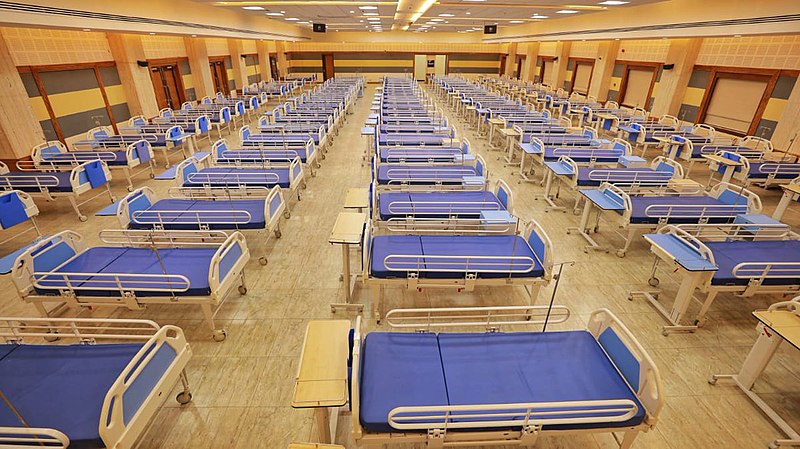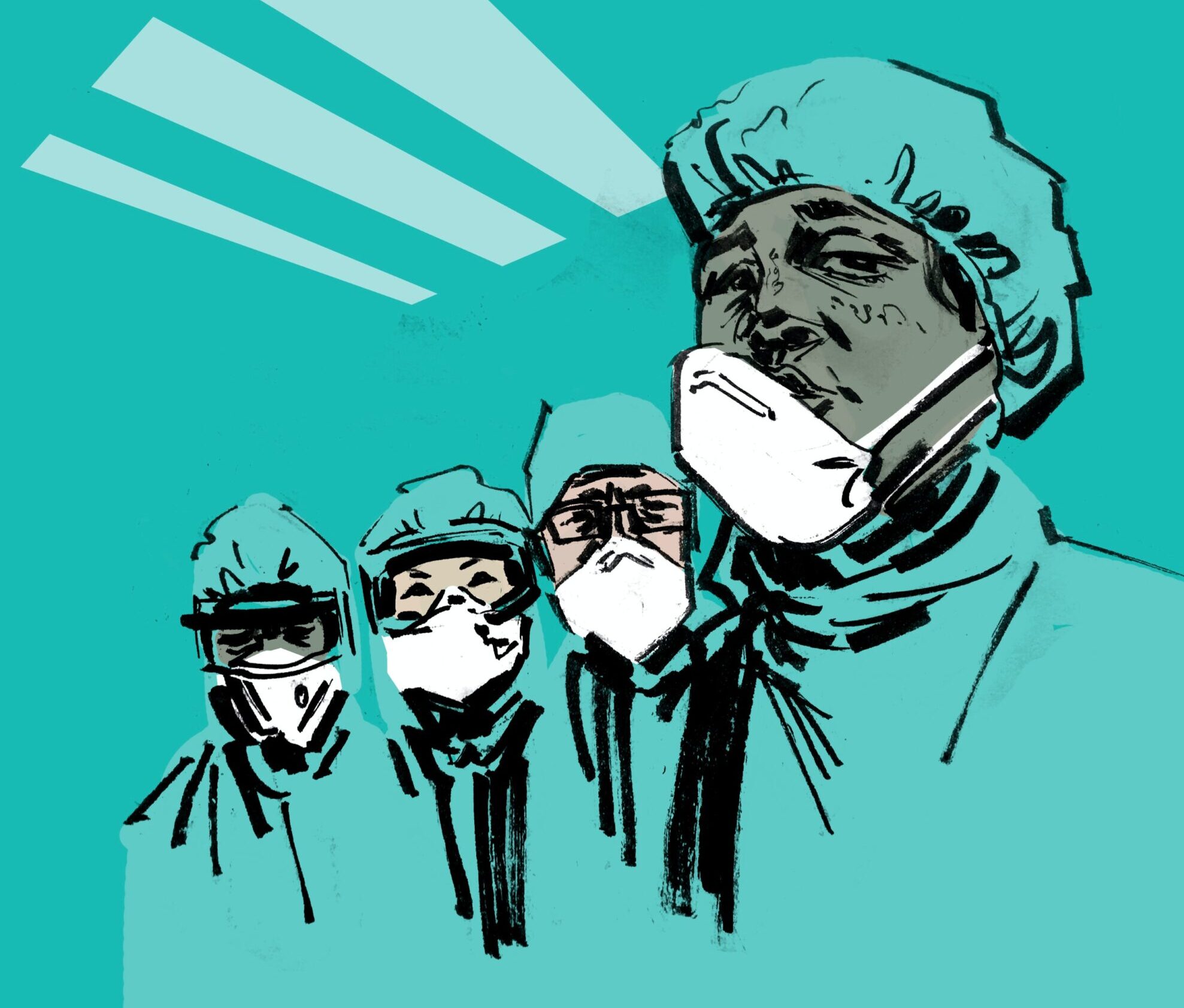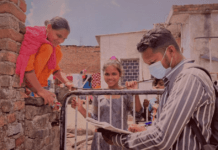Amid COVID-19, disease surveillance and early warning detection mechanisms have gained importance across the world.
In India, the role of tracing the outbreak of diseases has traditionally been performed by the Integrated Disease Surveillance Programme (IDSP), with the assistance of local state and municipal governments. For more than a decade, the IDSP has collected data on the incidence of diseases like influenza, swine flu, malaria, and several others; it then disseminates this information and identifies outbreaks. It is India’s first line of defence against the spread of disease.
But is the institution equipped to handle epidemics? From most assessments of the IDSP’s performance, it appears to have weak institutional and financial support, a chronic shortage of personnel and expertise, and a lack of statutory backing.
These factors, bolstered by the overall quality of healthcare infrastructure in India, hinder 1.3 billion people from availing the benefits of a comprehensive disease surveillance programme. This could cost India dearly when, not if, the next pandemic strikes.
What is the IDSP?
Formulated in the wake of the outbreak of SARS-CoV in 2004-05, the IDSP is the flagship programme under the National Centre for Disease Control (NCDC), for disease-based data collection, information dissemination, and data analysis.
The IDSP tracks the spread of over 22 communicable diseases and reports on outbreaks across India on a weekly basis. This is done through the surveillance of media reports, and inputs received from the public, private hospitals, medical colleges, Public Health Centres (PHC), and laboratories. Given their mandate, many have naturally argued that the raison d’etre of agencies like NCDC and the IDSP is to trace epidemics.
Currently, the NCDC is playing second fiddle to the ICMR in combating the COVID-19 pandemic. This is unsurprising, given the advantages the ICMR enjoys over the NCDC with regards to greater financial support and qualified personnel. This preference for the ICMR was also visible during the Nipah outbreak, when the task of managing the outbreak fell to the more visible of the two institutions, the ICMR. The NCDC continues to assist the ICMR in tackling the COVID-19 pandemic: but it is through the IDSP that it collates and tracks data on diseases.

This gives rise to the question: why isn’t the IDSP equipped to handle disease outbreaks like COVID-19? Why has the ICMR been handed the reins for managing a national pandemic?
Financing: Available, not accessible
The overarching reason boils down to a predictable answer: poor funding. India’s per capita government expenditure on healthcare amounted to ₹1,944, or, 1.29% of India’s GDP. The Centre’s contribution to India’s annual healthcare expenditure is only 25%.
As a result, the IDSP is underfunded, and whatever funds it does receive are not always utilised. Between 2005 and 2018, its annual expenditure was less than its allocated budget for 11 years out of 13. With annual spending of 57.13 crores of 68.3 crores allocated in 2018, the IDSP was under-equipped even before the COVID pandemic. The underwhelming financial support is reflected in the capacities of the institution.
A whopping 6.2% of India’s #GDP is required to fight #COVID19 with intensified public measures, says a report by #ICMR. This means that the cost of #Covid__19 care could be nearly five times the annual allocation for health budget.@SumiSukanya https://t.co/8EJwGw7mwi
— The New Indian Express (@NewIndianXpress) June 13, 2020
For example, even though COVID-19 entered India on the 30th January 2020, it took the Centre two months to identify adequate personnel to help fight the pandemic in March. A notice issued in March 2020 by the NCDC further illustrated the incapacity of the IDSP to act, as it attempted to correct a shortage of epidemiologists, microbiologists, and animal husbandry specialists in the IDSP’s district and state-level surveillance units. The dire straits the IDSP found itself in were only accentuated in a letter by Health Secretary Preeti Sudan on April 7th, which revealed a total of 382 vacancies in the IDSP, of which 216 were for district-level epidemiologists. It further stated that shockingly, 11 Indian states had no state-level epidemiologist at all.
This shortage of personnel has been a longstanding issue for the IDSP. Back in 2013, a World Bank Independent Evaluation Group review of the IDSP’s performance found that only 127 out of 231 positions for epidemiologists were filled at the time. The review also indicated substantial difficulties faced in the procurement of adequate equipment.
For instance, a 2013 study of the IDSP in Maharashtra found that 71% of 46 facilities studied could not send samples due to the lack of cold storage equipment. Out of 31 districts surveyed, only 53% of the districts had the lab equipment and infrastructure to confirm diseases monitored by the IDSP. As a result, 13 districts reported delays in case outbreak detection either due to lack of trained staff or equipment. Such failures to procure equipment have resulted in the cancellation of projects such as the mapping of avian sanctuaries, and the development of GIS-based zoonotic disease surveillance systems for India.
The situation has remained the same since 2015. A joint monitoring mission by the World Bank and Ministry of Health and Family Welfare (MoHFW) found that there was a 42.1% shortage in epidemiologists, a 32.9% shortage in microbiologists, and a 77.8% shortage in veterinary consultants.
How do all of these shortcomings add up? The paucity in personnel within the IDSP was brought to the fore during the 2018 outbreak of Nipah in Kerala. A WHO risk assessment of the Nipah response observed a large degree of improvisation at the early stages of the outbreak, which was compounded by the absence of trained and experienced surveillance personnel.
No Data, No Surveillance
The absence of trained public health personnel to staff the IDSP is also reflected in reported incidents of infected cases, indicating a plethora of data collection issues across states.
For example, a 2017 review of the IDSP’s functioning in Rajasthan noted that the state-level offices had problems collecting and cataloguing data. The report found that a few districts in Rajasthan remarkably did not report any dengue cases during the 2015 national outbreak. Data operators failed to properly collect and report on laboratory tests, by recording females as males and vice versa. Ideally, grassroots level personnel are supposed to use the IDSP Data Entry portal to provide daily updates on the incidence of epidemic-prone diseases. In reality, operators were poorly trained in the functionality of the IDSP portal, and faced problems retrieving data on disease incidence from previous years for comparative analyses.
Furthermore, although viruses like Nipah and Zika received national attention in 2019, in reality, the leading outbreaks that year were acute diarrhoeal diseases, food poisoning, chickenpox, measles, and dengue. The outbreak of a familiar and seasonal vector-borne disease like dengue continued to afflict India’s healthcare system, and was under-reported by the IDSP. Gujarat, which topped the list of states reporting cases of dengue in 2019, reported 16,565 dengue cases, an almost twofold rise from 2018. Yet, out of all of Gujarat’s 33 districts, seven failed to send any samples for tests. Ironically, the Gujarat government declared that in 2020 the state was vector-borne disease-free, only adding insult to the serious injury of disease prevention mechanisms in India.
Gujarat: 387 dengue cases in 22 days https://t.co/yCETlsptY6
— TOI Cities (@TOICitiesNews) August 23, 2019
Moreover, the private sector in India which accounts for nearly 70% of India’s capacity, is not obligated to share data with the IDSP, only hampering the quality of the data it collects and analyses.
This issue of transparency between the private and public health sectors is evidenced in Hyderabad’s preventive response to dengue. Data on the incidence of dengue was collected parallelly by the IDSP, the National Vector Borne Disease Control Programme, and the Greater Hyderabad Municipal Corporation leading to discrepancies in data. Furthermore, the IDSP was only able to collect information from 18 of the 863 registered private hospitals. The inability of infrastructure to address suspected cases necessitates better intergovernmental cooperation to surveil and manage diseases.
Given all these shortcomings, John T. Jacob, a prominent virologist, has stated that the IDSP is currently only capable of meeting the disease surveillance needs of a small country–not India’s. Yet, in spite of the real capacity constraints it faces, for over a decade, the IDSP has still been held responsible to track and trace multiple communicable diseases across the country.
The Disease Burden: To CD or NCD?
The IDSP’s mandate is no small task in India, where the disease burden of communicable diseases (CD) decreased from 60.9% in 1990 to 32.7% in 2016. Disease burden is measured by disability-adjusted life years (DALY), which indicates the number of years lost to illness, disability, or early death within a given population.
This decline has improved India’s epidemiological transition ratio, which is an indicator of the shift in disease burden from CD to Non-Communicable Diseases (NCD). Why is this significant? Because as countries become more prosperous, the disease burden often shifts from CD to NCD, a process called an epidemiological transition.
RESEARCH: India’s epidemiological transition ratio’s between the States #StateLevelDiseaseTrends Findings #health #data #GBDstudy pic.twitter.com/oPlP7TAnIL
— Public Health Foundation of India (PHFI) (@thePHFI) November 14, 2017
Yet, bucking the trend of a declining communicable disease burden, the outbreak of COVID-19 is reorienting the focus back to CD. The pandemic has underscored the importance of a robust disease surveillance mechanism and early warning systems to detect unknown fevers–which can be facilitated by a better equipped IDSP.
India’s Unknown Fevers:
India, like other developing countries, faces a greater risk (43%) of fevers of unknown origin, compared to developed countries (22%). A 2019 study authored by researchers and directors of the ICMR and NCDC, pointed out that close to ⅓ of the etiological agents responsible for fevers in the IDSP’s monthly reports could not be identified. They also note a rise in fever cases across India that tested negative for known viruses and pathogens. Another report by Down to Earth also found that since 2019, India had at least 33 cases of unknown fever and 12 outbreaks of acute encephalitis. Not all these fevers were identified accurately by the IDSP, which also failed to report outbreaks of fever in Orissa and Surat in 2019.
However, the fact of the matter is that as development rages on, the spread of zoonotic diseases will only increase. Identifying potentially harmful pathogens in the Indian context requires a coordinated effort between the state and research institutes. The handling of the Nipah virus in India–which is spread by bats–offers valuable insights on inter-sectoral cooperation in disease surveillance.
You May Also Like: The COVID-19 Battle: Pandemic v/s Privacy
Although the Nipah virus was detected early in 2018 and a major outbreak prevented, research about disease vectors like bats is underwhelming, with most testing on Indian species taking place outside the country. The Manipal Center for Virus Research (MCVR), the private research center that detected the Nipah virus, is now closed.
In February 2020, the MCVR’s license to receive foreign funding was revoked by the Ministry of Home Affairs (MHA), which alleged that the institute had studied the virus without the necessary safeguards, and had received foreign funding to do so. The accusations were strongly denied by the MCVR, which maintained that the government was well aware of its funding avenues and accolades received for their discovery and isolation of Nipah in 2018.
Therefore, there is a clear need for comprehensive governmental assistance to labs and institutes undertaking research in zoonotic diseases, to not only encourage better research in India, but to assist the IDSP in detecting outbreaks better. Harsh punishments, as doled out to MCVR, only penalises institutes and dampens research on zoonotic diseases.
Looking Ahead
In a post-COVID world, it is certain that organisations like the IDSP will perform a critical role within healthcare systems globally. In light of this increased responsibility, capacity-building is crucial, which is perhaps best achieved if the IDSP were not just a government scheme, but a statutory requirement for all states. This could bring uniformity in data collection, surveillance operations, and accuracy in the identification of diseases across states.
Ms Preeti Sudan, Health Secretary launched the New Integrated Health Information Portal (#IHIP) on Integrated Disease Surveillance Programme (#IDSP) in 7 identified states through video conferencing today. #SwasthaBharat pic.twitter.com/3QMelrHh0E
— Ministry of Health (@MoHFW_INDIA) November 26, 2018
Additionally, the IDSP can augment its surveillance capabilities by incorporating Internet search trends and social media analysis in urban centers into its analyses. This could notify officials of an impending outbreak, much like how search trends in China in November of 2019 indicated the outbreak of pneumonia and fevers, which was later discovered to be COVID-19. To improve India’s disease surveillance, the implementation of India’s Integrated Healthcare Information Platform (IHIP) in 2016 has endowed its healthcare infrastructure with the capacity to detect outbreaks in real-time. The IHIP collects disease data from public and private hospitals to provide real-time information on disease incidence across India. While the IHIP has the potential to strengthen India’s real-time data collection mechanisms, the focus must now shift to training and equipping disease surveillance personnel.
The Public Health (Prevention, Control and Management of Epidemics, Bio-Terrorism and Disasters) Bill was a good first step to modernise India’s disease surveillance infrastructure. The bill provided protections for healthcare workers, outlined powers of the executive, and clearly defined the scope of the law. However, any measures to improve disease surveillance ought to address the specific concerns of frontline agencies like the IDSP, which have been under-equipped–in an age rife with devastating disease–for far too long.
Featured image courtesy of Kevin Kobsic via United Nations on Unsplash. | Views expressed are personal.







Hie
Hiii